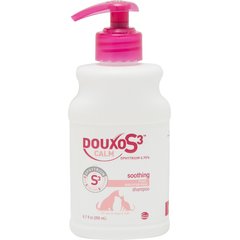Get the Best Dog Harness for Your Dog’s Body Type
Image via LeStudio/Shutterstock.com
By Victoria Schade
Opting for a dog harness instead of a dog collar is a great choice for dogs that pull on the leash, are hard to control or have potential health concerns due to the shape of their heads and necks, like brachycephalic dogs such as Pugs and Boston Terriers. A dog harness prevents strain because pressure from the dog leash is distributed rather than concentrated around the dog’s neck.
The variety of different types of dog harnesses can make choosing the right harness for your dog a challenge, so the following tips on how to fit a dog harness will help you select the best option for your favorite walking partner.
How to Measure Your Dog for a Harness
Dog harness sizes are typically based on a combination of measurements. The exact body measurement requirements vary by manufacturer but nearly always include your dog’s girth, or the circumference of the widest part of the ribcage.
To determine your dog’s girth, wrap a measuring tape around your dog’s body an inch or so behind the front legs so that the tape is snug but not tight. You can also wrap a string around your dog’s body then compare it to a ruler to gauge the size.
Some dog harness sizing also requires a “lower neck” measurement, which is the thickest part of your dog’s neck, just above the shoulders. Again, adjust the measuring tape so that it’s not too tight around your dog’s neck.
Some types of harnesses for dogs that have a strap across the front also require a chest width measurement. To determine your dog’s chest width, simply place the measuring tape across the front of your dog’s chest and over the breastbone, ending about an inch behind each leg.
Finally, some walking harnesses for dogs also require your dog’s weight in order to determine the perfect fit. Rather than trying to coax your dog on the scale—which might lead to inaccurate reading—pick up your dog and step on the scale together, then subtract your weight from the total.
Keep in mind that there is no universal size chart for dogs, so one manufacturer’s “medium” might be another manufacturer’s “small.” Once you pick a harness style, make sure to follow the manufacturer’s suggestions for determining your pooch’s perfect fit.
Vet Recommended Health Support
- Virbac C.E.T. Enzymatic Dog & Cat Poultry Flavor Toothpaste, 70 gram & Virbac C.E.T. Pet Toothbrush, Color Varies$18.88Chewy Price
- Vetnique Labs Oticbliss Advanced Cleaning, Soothing Aloe & Odor Control, Dirt & Wax Removal Dog & Cat Ear Wipes, 100 count$14.99Chewy Price
- Douxo S3 CALM Soothing Itchy, Hydrated Skin Dog & Cat Shampoo, 6.7-fl oz bottle$23.99Chewy Price
- Dermoscent BioBalm Skin Repairing Dog Balm, 1.67-oz jar$19.95Chewy Price
Refining the Fit of a Dog Harness
When putting your dog’s harness on for the first time, adjust it so that it doesn’t chafe or rub your dog’s skin as he walks, particularly under the front legs in the “armpit” area. It should be loose enough that you can slip two fingers beneath the harness, but not so loose that your dog can accidentally slip out of it.
Remember that your dog has two possible escape routes from a new dog harness—wiggling out the front or backing out the rear. Make sure to test that he can’t get free of the harness. To ensure a perfect fit, adjust one strap at a time, until the harness is resting in the right spot on your dog’s body and your dog looks safe and comfortable.
Choosing the Right Harness for Your Dog
Given the many shapes, sizes and needs of our furry best friends, there is no single, best dog harness that works for every type of dog. The following suggestions can help narrow your focus when it comes to choosing the right harness for your dog.
Fashion-Minded Dogs
If you and your dog walk politely together and enjoy showing off your personal style, your options are unlimited! Traditional ribbon-style harnesses, like the Blueberry Pet Spring Prints dog harness, offer a variety of prints and colors with numerous adjustment points to ensure a comfortable fit. Mesh-style harnesses, like the Puppia Vivien harness, feature a breathable chest plate that can accommodate dogs of all sizes.
Hard-To-Fit Dogs
It can be challenging to find the right dog harness for breeds like English Bulldogs and Dachshunds because of their unique shapes. Pet parents need to make sure the harness is easy to use and accommodates aspects of their dogs’ bodies that could get in the way of a perfect fit, like broad chests and long torsos. The soft leather Buddy Belt Classic dog harness is a simple one-buckle, step-in dog harness that was actually created to fit a miniature dachshund, and also works well on barrel-chested bully breeds. The Julius- K9 IDC Powerharness is another great option for Bulldogs because of its heavy duty construction and ease of use.
Strong Dogs
A no-pull dog harness helps pet parents manage dogs that are challenging to control on leash. No-pull harnesses are specifically designed to decrease pulling—standard harnesses are not. The PetSafe Easy Walk dog harness features four adjustment points to ensure a perfect fit for dogs of all sizes and has a front ring leash attachment that gently reduces pulling. The Sporn Training dog halter is a veterinarian-approved system that humanely stops pulling without choking and features padded leg sleeves for a comfortable fit.
Senior/Handicapped Dogs
Some dogs need extra help when it comes to leash walking. Whether dealing with decreased mobility from old age, or post-surgical rehabilitation, a harness that provides extra support, like the GingerLead Support and Rehabilitation lifting harness can make trips outside easier. This harness enables pet parents to support a dog’s weakened back legs comfortably while allowing for necessary hygiene.
Double Duty Dogs
If your dog is the type that wants to go-go-go the second you turn off the car, opt for a harness that works as a dog seat belt restraint as well as a walking harness. The Kurgo Tru-Fit Smart Harness helps to keep your dog safe in the car with a crash-tested, all-steel buckle system and features five adjustment points so that your dog will remain comfortable during your post-drive walk.




